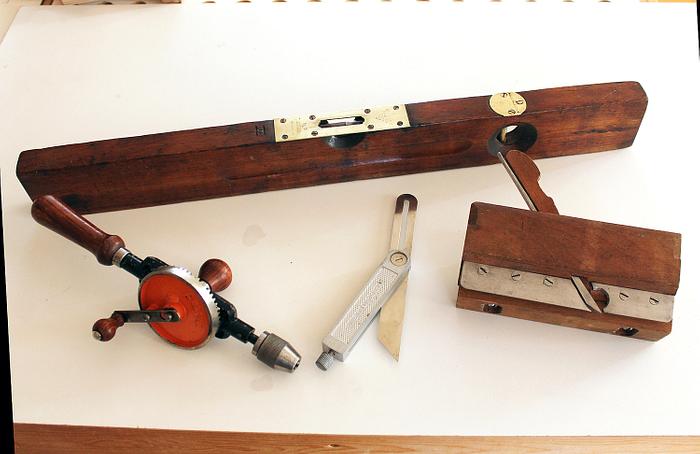Share your craft projects
Make new craft buddies
Ask craft questions
Blog your craft journey

Norman Pirollo
156 posts
and
18 followers
in over 5 years
in over 5 years
New Life For Old Tools
While at my local wood supplier, they had a few shelves of vintage tools for sale. They do this in the Christmas period every year. So I immediately searched through and sought out some gems. I did find a few tools of which I either don't have or weren't broken and simply needed restoration. Another criteria when purchasing old tools is to make sure all the parts are there as replacement parts are virtually non-existent. You would need a second of the same to supply parts or need to fabricate your own parts. I purchased them, and later spent 3 hrs. or so disassembling , cleaning, polishing, adjusting them. I am very happy with how they turned out. Have always wanted an eggbeater hand drill ( the 1st cordless drill). The moving fillister plane (c. 1880's) for drawer bottom grooves had all its parts and was salvageable.
This handplane has an adjustable fence so grooves can be offset from an edge. A Stanley Level c. 1906 was too good a price to pass up. The Sliding Bevel had a feature I have always wanted. The adjuster and lock are located at the end instead of on the face. This allows the body of the sliding bevel to be placed against a surface without any interfering knobs or levers. The Eggbeater Drill was in good condition and had a small issue with the chuck, it would not close. Turns out, it had a few hardwood chips embedded in the spring area keeping the movement from sliding freely. Cleaning it, lubricating it and it worked well afterwards.
This handplane has an adjustable fence so grooves can be offset from an edge. A Stanley Level c. 1906 was too good a price to pass up. The Sliding Bevel had a feature I have always wanted. The adjuster and lock are located at the end instead of on the face. This allows the body of the sliding bevel to be placed against a surface without any interfering knobs or levers. The Eggbeater Drill was in good condition and had a small issue with the chuck, it would not close. Turns out, it had a few hardwood chips embedded in the spring area keeping the movement from sliding freely. Cleaning it, lubricating it and it worked well afterwards.

Restored vintage tools. Brass is polished, mechanisms oiled, wood and metal cleaned and adjusted, iron honed.

I was asked what the fillister plane does, so created a short video. It excels at creating grooves, specifically drawer bottom grooves. Video shot after the wood-bodied fillister plane was restored, adjusted, iron honed, etc. Picture a late 1800's workshop before the advent of electricity and powered machines and I need to create a drawer bottom groove in a panel. I adjust this fillister plane to the correct offset and plane away. There is a technique to this of course, but it is quickly learned. The final groove is 1/4 in. wide X 1/4 in. deep and lets in a drawer bottom. No dust or noise, just fluffy shavings. The video below demonstrates the creation of a drawer groove in a small panel using the newly restored fillister plane. Why I prefer hand tools over machines.
https://coachtestprep.s3.amazonaws.com/direct-uploads/user-126264/a4d9b555-7265-4442-997f-efbdc52e5efc/PlowPlane.mp4
https://coachtestprep.s3.amazonaws.com/direct-uploads/user-126264/a4d9b555-7265-4442-997f-efbdc52e5efc/PlowPlane.mp4
Norman Pirollo








